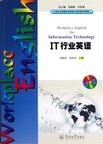IT行业英语
出版时间:2012-8 出版社:暨南大学出版社 作者:谭新星,段琢华 主编 页数:169 字数:273000
内容概要
地方高校大学英语教学深化改革面临的重大研究课题应该是根据应用型人才的培养目标和社会需求扩展课程内容体系,做到辅助专业,注重实用,面向社会,服务行业。开发应用型本科教育行业英语教材正是基于上述的分析和改革的需要而设计的,目的是培养学生在职场环境下的英语交际能力,为就业竞争力的提升及未来的可持续发展打下必要的基础。
《21世纪应用型本科教育行业英语系列教材:IT行业英语》突出大行业职场交际所需要的英语知识与技能的训练,注重交际语言和技能的实用性、通用性、时效性、典型性和可模拟性。
书籍目录
前言
Unit 1 Development of IT
Listening
Situation 1 Interviewing for a job of writing computer
programs
Situation 2 Getting better prepared for a job interview
Speaking
Situation 3 Asking about a job opening
Situation 4 Attending a job interview
Reading
Passage 1 A Brief History and Development of Information
Technology
Passage 2 Computer: History and Development
Writing
Sample A Resume
Unit 2 An Overview of IT
Listening
Situation 1 At the dinner pafly
Situation 2 Making a welcoming speech at the dinner party
Speaking
Situation 3 Meeting a foreign guest at the airport
Situation 4 Discussing the agenda
Reading
Passage 1 Fastest-growing IT Jobs
Passage 2 Computer Software Definition
Writing
Sample 1 A Letter of Application
Sample 2 A Letter of Acceptance
Unit 3 Information System Introduction
Listening
Situation 1 Making an appointment of purchasing CPU
Situation 2 Making an effective business appointment
Speaking
Situation 3 Making a business appointment
Situation 4 Putting off a business appointment
Reading
Passage 1 What is Information System?
Passage 2 New Trends in Information Systems
Writing
Sample 1 An Inquiry Letter
Sample 2 A Reply to the Inquiry Letter
Unit 4 Information System Development Process
Listening
Situation 1 Visiting ABC Company
Situation 2 Visiting Lenovo
Speaking
Situation 3 Visiting an IT company
Situation 4 Visiting a showroom of an IT company
Reading
Passage 1 Information System Development Methods
Passage 2 The 9-Step Approach for Information Systems
Development
Writing
Sample An Order Letter
Unit 5 Network Communication
Listening
Situation 1 Presenting a new model of photocopier
Situation 2 Presenting a new model of mobile phone
Speaking
Situation 3 Discussing how to increase the iPhone 4S sales
Situation 4 Discussing to open a new Apple Incorporation
Reading
Passage 1 Network Topology
Passage 2 Wireless Sensor Network
Writing
Sample 1 A Letter of Complaint
Sample 2 A Letter of Settlement of Complaint
Unit 6 IT Corporate Culture
Listening
Situation 1 Introducing working requirements
Situation 2 Giving a speech on working requirements at a training
meeting
Speaking
Situation 3 Talking about teamwork
Situation 4 Discussing architectural desigh
……
Unit 7 Communication in IT Environment
Unit 8 Software Engineering
参考答案
Glossary
章节摘录
An Introduction to the Requirement Analysis for Software Engineering The requirements for a system are the descriptions of the services provided by the system and its operational constraints.These requirements reflect the needs of customers for a system that helps solve some problem such as controlling a device, placing an order or finding information. The process of finding out, analyzing, documenting and checking these services and constraints is called requirements engineering. Software system requirements are often classified as functional requirements, non-functional requirements and domain requirements:1. Functional requirements.These are statements of services the system should provide, how the system should react to particular inputs and how the system should behave in particular situations.ln some cases, the functional requirements may also explicitly state what the system should not do. 2. Non-functional requirements.These are constraints on the services or functions offered by the system. They include timing constraints, constraints on the development process and standards. Non-functional requirements often apply to the system as a whole. They do not usually just apply to individual system features or services. 3. Domain requirements.These are requirements that come from the application domain of the system and that reflect characteristics and constraints of that domain. They may be functional or non-functional requirements. In reality, the distinction between different types of requirements is not as clear-cut as these simple definitions suggest.A user requirement concerned with security, say, may appear to be a non-functional requirement However when developed in more detail, this requirements may generate other requirements that are clearly functional, such as the need to include user authentication facilities in the system. The functional requirements for a system describe what the system should do. These requirements depend on the type of software being developed, the expected users of the software and the general approach taken by the organization when writing requirements. When expressed as user requirements, the requirements are usually described in a fairly abstract way. However, functional system requirements describe the system function in detail, its inputs and outputs, exceptions, and so on. Functional requirements for a software system may be expressed in a number of ways. For example, here are examples of functional requirements for a university library system called LIBSYS, used by students and faculty to order books and documents from other libraries. ……
图书封面
评论、评分、阅读与下载
